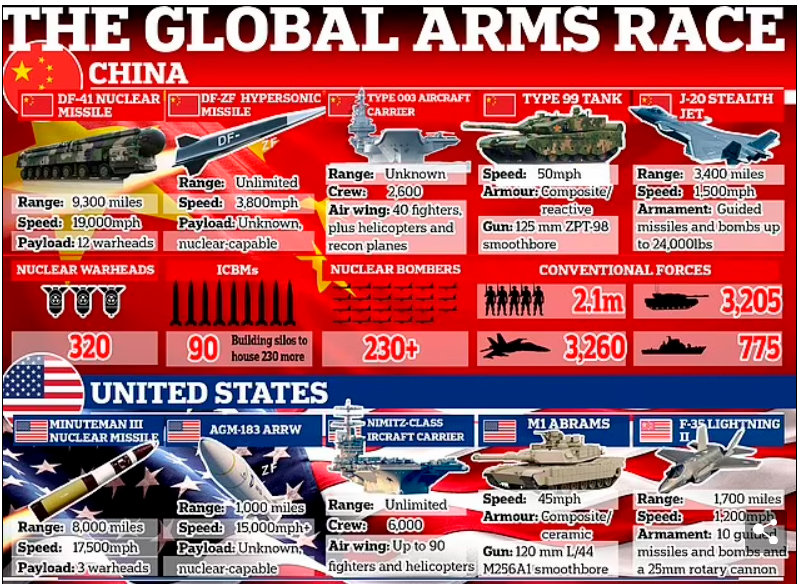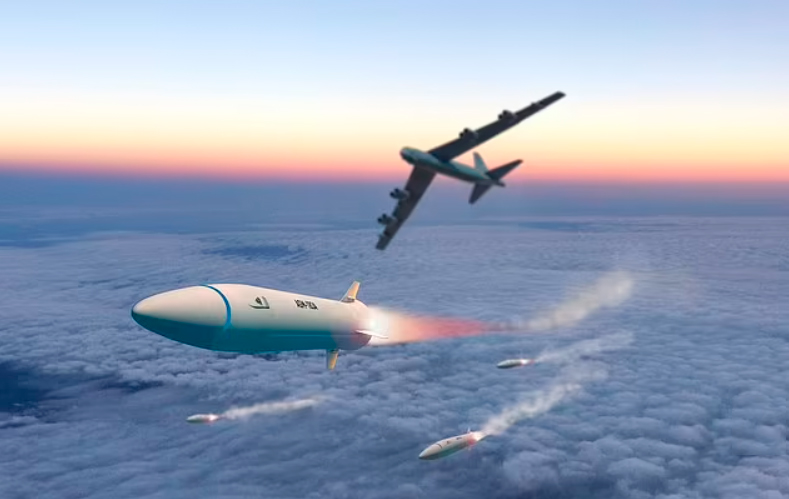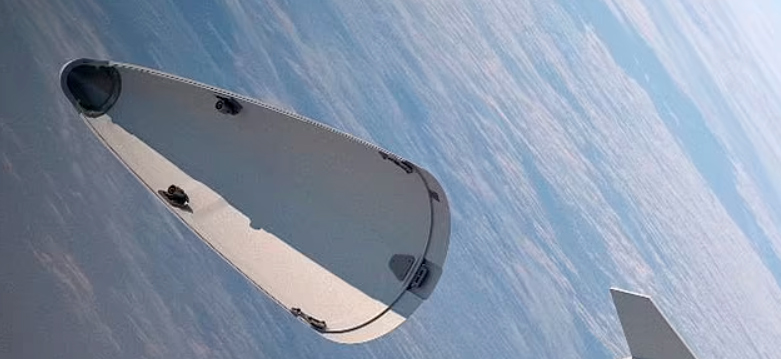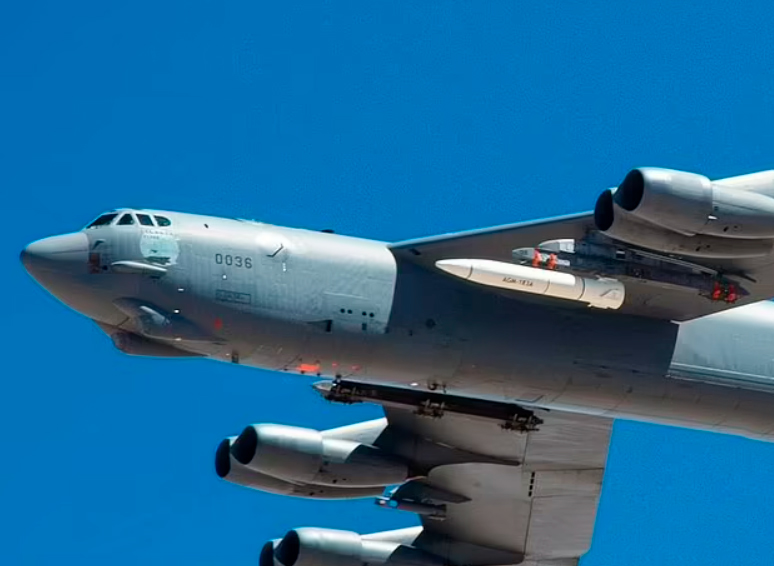La US Air Force completó el Test Operacional del misil Hipersónico AGM-183A ARRW (Air lunched Rapid Response Weapon), utilizando como plataforma un bombardero estratégico B-52 “Stratofortress”. Se trata del 1er lanzamiento de este misil hipersónico ARRW, en condiciones operacionales y con la totalidad de sus componentes, inclusive portando su cabeza de guerra. Todos los ensayos anteriores fueron de tipo funcional y tenían por objetivo verificar el sistema de propulsión y el comportamiento de los componentes estructurales, en la exigentes condiciones de vuelo en régimen hipersónico, a velocidades superiores a MACH 5. Autoridades de Lockheed Martin, la empresa responsable del desarrollo, expresaron: ‘La necesidad de capacidades de ataque con sistemas hipersónicos, es crítica para nuestra nación”. En el parte de prensa la US Air Force comunicó que el ARRW alcanzó la velocidad hipersónica requerida, completó el vuelo programado, impactando con precisión en el blanco asignado.
The U.S. Air Force completed an ‘operational’ test of a prototype hypersonic missile that flew more than five times the speed of sound after being released from a hulking 5-52 bomber, the Pentagon said Monday.
The test, carried out off the California coast, is the latest test of the ultra-fast weaponry as the U.S. attempts to remain competitive with strategic rivals with the brutal war in Ukraine as the backdrop.
A previous test in May also achieved hypersonic speeds with the release of an Air-launched Rapid Response Weapon (ARRW) from a B-52.
‘A B-52H Stratofortress successfully released the first All-Up-Round AGM-183A Air-launched Rapid Response Weapon off the Southern California coast, Dec. 9,’ said the statement released Monday from Eglin Air Force Base in the Florida panhandle.
‘This test was the first launch of a full prototype operational missile. Previous test events focused on proving the booster performance.’
According to the Air Force, after the B-52 released the missile, ‘it reached hypersonic speeds greater than five times the speed of sound, completed its flight path and detonated in the terminal area.’
‘Indications show that all objectives were met,’ according to the statement, which did not include accompanying photographs.
Brig. Gen. Jason Bartolomei, Armament Directorate Program Executive Officer, touted the speed of not just the missile, but the the program, which comes as the Russians claim already to have used their missile in combat.
‘The ARRW team successfully designed and tested an air-launched hypersonic missile in five years,’ he said in the statement. ‘I am immensely proud of the tenacity and dedication this team has shown to provide a vital capability to our warfighter.’
Russia has fired hypersonic missiles at targets in Ukraine and China has tested hypersonic weapons, U.S. military officials have said.
The last milestone came in May, when the Air Force announced it had successfully tested a hypersonic weapon, as it tries to catch up with rapid advances made by rivals around the world.
That also involved the release of an ARRW by a B-52 off the coast of Southern California.
‘Following separation from the aircraft, the ARRW’s booster ignited and burned for expected duration, achieving hypersonic speeds five times greater than the speed of sound,’ it said.
The United States is not alone in developing hypersonic weapons, whose speed and maneuverability make them difficult to track and intercept.




China’s foreign ministry denied in October that it had conducted a weapons test.
Lawmakers have repeatedly warned that the U.S. risks being left behind by its competitors.
And progress was not helped by a string of failed tests.
The weapon was supposed to reach operational status by October, but problems last year – when the Lockheed-built missile failed three consecutive booster motor tests – pushed that deadline back.
Air Force Program Executive Officer for Weapons Brig. Gen. Heath Collins said: ‘The team’s tenacity, expertise, and commitment were key in overcoming the past year’s challenges to get us to the recent success.
‘We are ready to build on what we’ve learned and continue moving hypersonics forward.’
Lockheed Martin said the latest test demonstrated the weapon’s ability to withstand operational hypersonic speeds and ensure safe separation from the aircraft.
‘The need for hypersonic strike capabilities is critical to our nation and this successful test will help us to maintain an accelerated and rigorous timeline,’ said Dave Berganini, vice president of Hypersonic and Strike Systems at Lockheed Martin Missiles and Fire Control.
‘Our strong partnership with the U.S. Air Force has allowed us to quickly progress hypersonic technologies for our men and women in uniform.’
In a sign of the urgency facing Washington, the U.S. announced last month it was teaming up with the United Kingdom and Australia to accelerate development.
‘We also committed today to commence new trilateral cooperation on hypersonics and counter-hypersonics, and electronic warfare capabilities, as well as to expand information sharing and to deepen cooperation on defense innovation,’ said the three nations.
‘These initiatives will add to our existing efforts to deepen cooperation on cyber capabilities, artificial intelligence, quantum technologies, and additional undersea capabilities.’
Fuente: https://www.dailymail.co.uk


